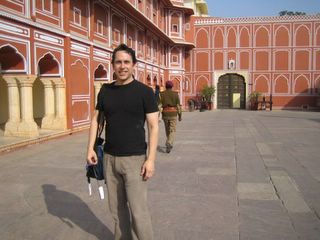In the early years of my career, I felt I had a good resume. It was pretty cool and it all made sense. And the one day—all hell broke loose! For I had added one experience too many and things didn’t fit into any clearly defined box.
When people asked me what I did, or what I aspired to do, it was hard to give a straight answer. “It depends,” would have been the correct one. A lawyer? A writer? An entrepreneur? An unemployed person? A former this? An aspiring that?
I wasn’t sure which identity people wanted to hear about, and I wasn’t sure which identity was really me. And I wasn’t sure whether random experiences—my experiment with stand-up comedy and open-mike singing, my gigs writing on philanthropic topics—counted as a whole identity.
Part of me thought, "Why do I have to be some dumb label, anyway?" And part me thought, "What I really need is a smart, cool label that can magically encapsulate all the fabulosity that is Michael F. Melcher!"
If any of this rings a bell—if you have gone shopping for boxes to put yourself in and discovered that the only ones available are too small, too flimsy or are still using that tiresome 1980s color scheme of mauve and grey, then I’ve got the book for you!!! It’s called “One Person/Multiple Careers,” and it’s by Marci Alboher, a lawyer turned author/speaker/writing coach. It’s hot off the presses.
You’ll note the slashes in her current title. “Slashes” is what the book is all about.
Marci shows that the slash effect has gone way, way beyond the old standbys of actor/waiter and writer/[tedious day job]. Her book is filled with stories of really interesting, cool slashes: a lawyer/minister, a psychiatrist/violinmaker, an art consultant/Pilates instructor, a rabbi/stand-up comic, along with the tale of a very charming and handsome life coach to the stars based in New York.
More to the point, the book explains very clearly how having a slash career isn’t something to manage, or explain away. It’s something to ASPIRE TO, and she shows you the methods for making it work. This is the greatest contribution that this highly readable book makes. That slashing is part of good living.
As Marci says in the epilogue, “After all, who can answer the question ‘what do you do?’ with a singular response? And who would want to?”
skip to main |
skip to sidebar

